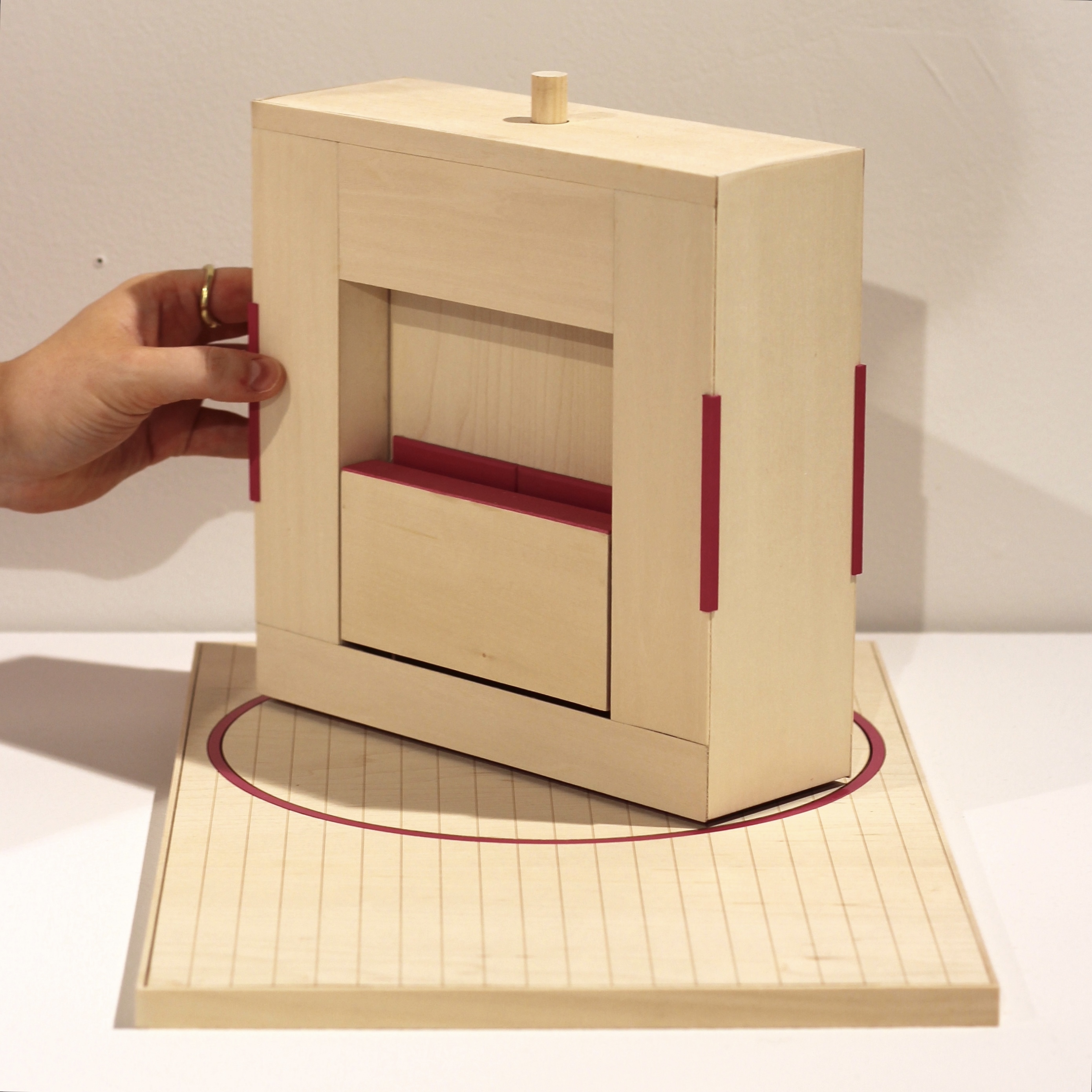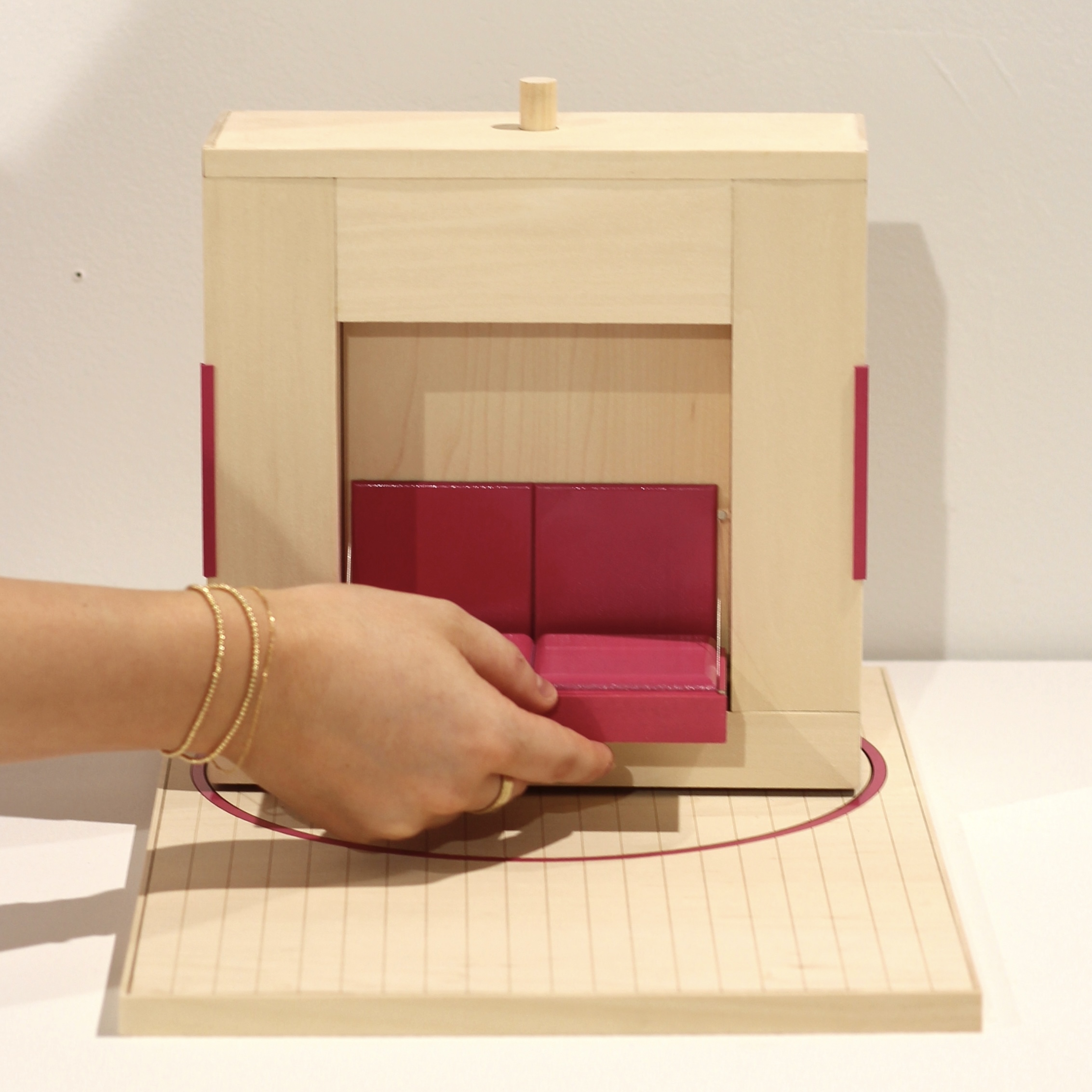MASTER OF ARCHITECTURE
Jilian Sproul—AIA Medal for Academic Excellence
![]()
Jilian Sproul—AIA Medal for Academic Excellence

About the Award
AIA Medal for Academic Excellence:
For a graduate who displays excellence throughout their academic career.
Playhouse Re-Imagined: Adopting the Open Tendencies of Child’s Play
Play is an open, expressive, and manipulative act. Using play as the binding member between architecture and people, users become players, transcending the typical static and rigid relationship between space and living. Adopting play processes within architecture, specifically in the adult home environment, demands an open framework that re-defines the defaulting uses of architectural elements, and extends beyond typical customization, permitting an intimate connection to one’s personal space through personal expression. The spontaneous and undirected nature of child’s play demonstrates an engaged interaction between an individual and their surrounding physical environment. A child’s lack of sub-conscious bias towards an object’s intended use while playing allows for an unconventional use of elements. This mindset forms the basis for Open Play methodology that this thesis adopts. It stipulates that we must design architecture in an open manner, meaning that architectural elements are not bounded by the defaulting perceptions of their use. Transgressing their planar constraints, deeming them inherently soft, opens the architecture to opportunities for movement, manipulation, and appropriation by the player. Eliminating the nomenclature of an architectural element, and redefining it simply as an element, formulated by components, which creates a system, permits one to reclaim their child-like perceptions of an object’s use, unbounded potential. The open play of the child is interpreted as a form of expression, prompting play to act as the means of providing agency in architecture, strengthening the individual bond between player and built environment. The A-Typical House becomes the site of this exploration, to challenge default architectural assumptions within the home environment.
In the A-Typical House, the elements are not bounded by their prescribed use, to simply divide. The architecture openly functions, negotiates and moves to create an open architecture implementing the ‘Open Play’ methodology. The elements add to the ambiguity of the house, acting as different elements through its components without planar constraints. The house radically re-imagines the adult dwellers reality creating the adult’s imagined playhouse. It tells our inner child that it is OK to play, to be free, be open and express our desires in our personal space. It does so through an open architecture. The ‘Open Play’ methodology propelled the design of the A-Typical House, making it resemble the open nature of the child’s play fort. The singular object, the pillow, like the designed element, became more than just a wall in the child’s mind. It became the open architecture that supported the child’s spontaneous agency driven by the open imagination.
The A-Typical House is not the final product of ‘Open Play’ architecture, it is only the beginning. ‘Open Play’ architecture offers a methodology through which design becomes a dynamic process free of pre-conceived notions, one that challenges default thinking and expands the limits of architectural discourse. If we open our thinking, our inner child can play.
AIA Medal for Academic Excellence:
For a graduate who displays excellence throughout their academic career.
Playhouse Re-Imagined: Adopting the Open Tendencies of Child’s Play
Play is an open, expressive, and manipulative act. Using play as the binding member between architecture and people, users become players, transcending the typical static and rigid relationship between space and living. Adopting play processes within architecture, specifically in the adult home environment, demands an open framework that re-defines the defaulting uses of architectural elements, and extends beyond typical customization, permitting an intimate connection to one’s personal space through personal expression. The spontaneous and undirected nature of child’s play demonstrates an engaged interaction between an individual and their surrounding physical environment. A child’s lack of sub-conscious bias towards an object’s intended use while playing allows for an unconventional use of elements. This mindset forms the basis for Open Play methodology that this thesis adopts. It stipulates that we must design architecture in an open manner, meaning that architectural elements are not bounded by the defaulting perceptions of their use. Transgressing their planar constraints, deeming them inherently soft, opens the architecture to opportunities for movement, manipulation, and appropriation by the player. Eliminating the nomenclature of an architectural element, and redefining it simply as an element, formulated by components, which creates a system, permits one to reclaim their child-like perceptions of an object’s use, unbounded potential. The open play of the child is interpreted as a form of expression, prompting play to act as the means of providing agency in architecture, strengthening the individual bond between player and built environment. The A-Typical House becomes the site of this exploration, to challenge default architectural assumptions within the home environment.
In the A-Typical House, the elements are not bounded by their prescribed use, to simply divide. The architecture openly functions, negotiates and moves to create an open architecture implementing the ‘Open Play’ methodology. The elements add to the ambiguity of the house, acting as different elements through its components without planar constraints. The house radically re-imagines the adult dwellers reality creating the adult’s imagined playhouse. It tells our inner child that it is OK to play, to be free, be open and express our desires in our personal space. It does so through an open architecture. The ‘Open Play’ methodology propelled the design of the A-Typical House, making it resemble the open nature of the child’s play fort. The singular object, the pillow, like the designed element, became more than just a wall in the child’s mind. It became the open architecture that supported the child’s spontaneous agency driven by the open imagination.
The A-Typical House is not the final product of ‘Open Play’ architecture, it is only the beginning. ‘Open Play’ architecture offers a methodology through which design becomes a dynamic process free of pre-conceived notions, one that challenges default thinking and expands the limits of architectural discourse. If we open our thinking, our inner child can play.







